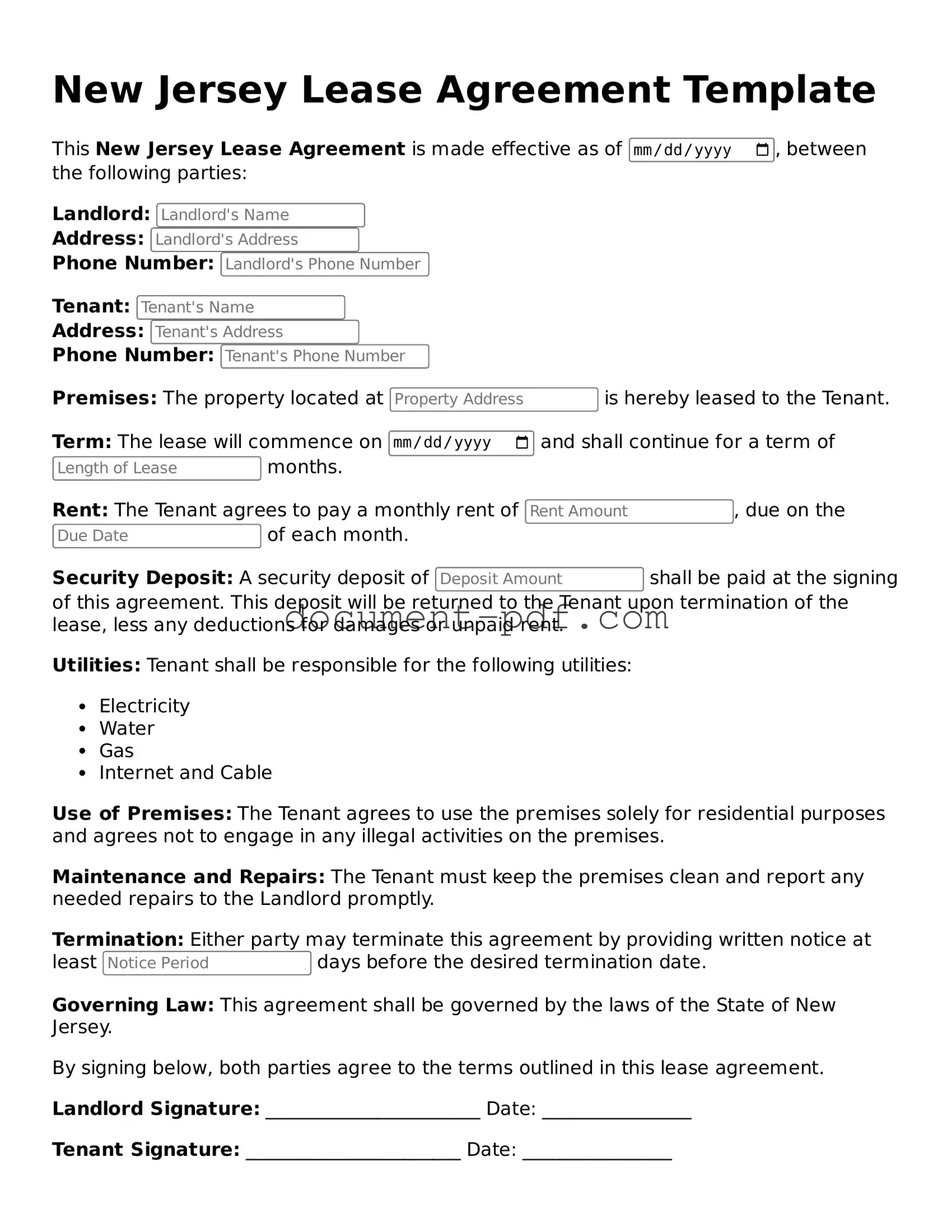Attorney-Verified New Jersey Lease Agreement Template
A New Jersey Lease Agreement form is a legal document that outlines the terms and conditions of renting a residential property. This form protects the rights of both landlords and tenants, ensuring clarity in their relationship. To get started with your lease, fill out the form by clicking the button below.
Access Lease Agreement Editor Here
